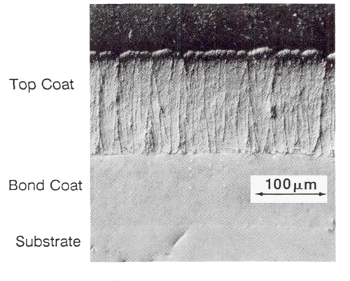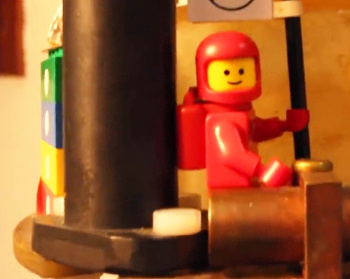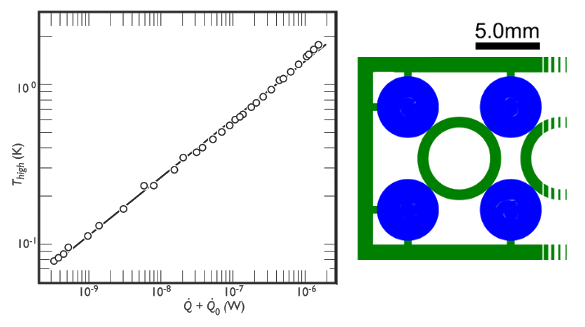Frigid Legos®
February 10, 2020
Gravitation is likely the first
principle of physics discovered by
children. While
diapers provide some
cushioning, every
fall provides some
reinforcement that
you can't fool Mother Nature. After gravitation,
thermal conductivity might be a child's next most important physical principle. Children learn at a young age that cold
metal objects
extract heat from their
hands much faster with
mittens off than on; and that a
pot-holder should be used when grabbing the
handles of hot
pots and pans on a
stove top.

Portion of a poster of a woman holding hot coffee.
My paternal grandfather, who emigrated from Italy, drank his breakfast coffee from a soup bowl into which he crushed biscuits.
I surmise that this was the way breakfast coffee was taken in his home region of Calabria.
(An 1897 lithograph by Henri Meunier, United States Library of Congress Prints and Photographs division digital ID cph.3b49736, via Wikimedia Commons
Materials having low thermal conductivity and
thermal barrier coatings (TBCs) are important parts of many of today's
advanced technologies. Our
homes are kept warmer in the
winter and cooler in the
summer because of their
glass fiber insulation. One extreme application for thermal barrier coatings is as a protection of
turbine engine blades from the
heat of
burning fuel in
gas turbine engines. Since turbine engine
efficiency increases with operating
temperature, turbine blades are employed at extremely high temperatures, and they are protected from
damage by a combination of
air cooling channels and a thermal barrier.
Yttria-stabilized zirconia (YSZ), which is
zirconium oxide containing about 7%
yttrium oxide, is a common TBC material for this application (see figure).

Cross-section of a turbine engine blade thermal barrier coating showing its columnar structure.
While electrons participate somewhat in heat transfer in metals, heat transfer is mostly done by Phonons, the quantized acoustic vibrations in crystals.
The columnar structure reduces the number of phonon modes that are allowed to propagate, and this reduces the thermal conductivity.
(Photograph from a 1990 NASA report.[1] Click for larger image.)
I did
research on turbine blade
alloys and
coatings about a
decade ago, but even small turbine blades are
expensive items, so I don't have any
keepsakes at my house. What are underfoot at my house and the houses of my
grandchildren are many pieces of the
popular Lego® construction sets.
Physicists at
Lancaster University (Lancaster, Lancashire, England) have recently performed thermal conductivity measurements at the opposite end of the temperature scale, at temperatures just a few thousandths of a degree above
absolute zero. Most interestingly, these measurements were on Lego® pieces formed from
acrylonitrile butadiene styrene (ABS) plastic. Their research appears in an
open access paper in the December 23, 2019, issue of
Scientific Reports.[2-4]
Although marketed as a
toy, the Lego® pieces have
physical and mechanical properties that might be useful in the construction of
laboratory experiments. In 2012,
BBC News wondered how many Lego®
bricks could be stacked before the bottom brick would be crushed.[5]
Engineers at the
Open University (UK) found that 2 x 2 bricks (the ones with four coupling
cylinders) have a
mass of 1.152
grams and can withstand an average
compression force of 4,240
newtons. A
calculation shows that you can stack 375,000 such bricks before the bottom brick collapses, and this
tower would reach a height of 3,591
meters (11,781
feet, 2.17
miles).[5] Adding some
carbon nanotubes to the Lego® ABS plastic might be a good start to building a
space elevator.
The
expertise of the Lancaster physics team is in measurements at
ultra-low temperature. Their
equipment is capable of cooling small objects to temperatures as low as 1.6 millidegrees using a method called
dilution refrigeration that's based on the mixing of two
liquid helium isotopes,
helium-3 (3He) and
helium-4 (4He). When a mixture of these fluids is cooled below 1
kelvin, the
less dense (
3He) floats atop the (
4He), although some (
3He)
atoms remain in the bottom (
4He) layer. Since the
vapor pressure of (
3He) is higher than that of (
4He),
pumping the
vapor will cause these atoms to migrate to the top layer.
Energy is required for this transfer, and the overall effect is to cool the liquid helium mixture.

Lego® pieces in the Lancaster University helium dilution refrigerator.
Just visible is a stack of Lego® bricks at the left, hidden by a supporting rod. A Lego® figure of a "Cryonaut" can be seen at the center.
(Still image from a Lancaster University YouTube Video.)
Why is it important to measure the low temperature thermal conductivity of Lego® pieces? Dilution refrigerators, such as the one used by Lancaster physics team in this experiment, require a high degree of
thermal isolation from the
environment, and this is accomplished by low thermal conductivity
radiation shield spacers and support rods.[3] Some plastic materials with low thermal conductivity are available, but they are expensive. LEGO® blocks are quite inexpensive, have good mechanical properties; and, as the experiment has shown, exhibit a thermal conductivity that's lower than commonly used materials.[2]
The measured
thermal conductance of the stack of LEGO® blocks was (8.7 ± 0.3) x 10
−5 T
1.75±0.02 WK
−1 m
−1 in the temperature range from 70 mK to 1.8 K. One reason for the low thermal conductivity is the minimal surface contact made between assembled bricks that leads to a high
thermal resistance (see figure).[2]

Left image, a graph of the experimental thermal conductivity data in which the vertical temperature gradient across the stack of Lego® bricks is plotted against the heat load. Right image, a cross-section of the Lego® brick connections showing the minimal contacting surfaces that lead to high thermal resistance. Both images are from Ref. 2, and they are licensed under the Creative Commons Attribution 4.0 International License.[2]
As
Dmitry Zmeev, a
lecturer and
EPSRC Research Fellow at Lancaster University who led the research team, explains,
"Our results are significant because we found that the clamping arrangement between the LEGO® blocks causes the LEGO® structures to behave as an extremely good thermal insulator at cryogenic temperatures... This is very desirable for construction materials used for the design of future scientific equipment like dilution refrigerators." [3]
The Lancaster team's next step is to
design,
3D print, and test an improved thermal insulator for dilution refrigerators.[3]
References:
- William J. Brindley and Robert A. Miller, "Thermal Barrier Coating Evaluation Needs," NASA Technical Memorandum 103708, Lewis Research Center (Cleveland, Ohio, 1990), Prepared for the Conference on Nondestructive Evaluation of Modern Ceramics, Columbus, Ohio, July 9-12, 1990 (PDF File).
- J. M. A. Chawner, A. T. Jones, M. T. Noble, G. R. Pickett, V. Tsepelin, and D. E. Zmeev, "LEGO® Block Structures as a Sub-Kelvin Thermal Insulator," Scientific Reports, vol. 9, article no. 19642, December 23, 2019, doi:10.1038/s41598-019-55616-7. This is an open access article with a PDF file here.
- The coolest LEGO® in the Universe, Lancaster University Press Release, December 23, 2019.
- The World's Coolest LEGO Set, Lancaster University YouTube Video, December 23, 2019.
- Ruth Alexander, "How tall can a Lego tower get?" BBC News, December 4, 2012.
Linked Keywords: Gravitation; physical law; principle of physics; child; children; diaper; cushioning; falling (accident); reinforcement; Mother Nature; you can't fool Mother Nature; thermal conductivity; metal; heat transfer; extracting heat; hand; mittens; pot-holder; handle; cookware and bakeware; pots and pans; cook stove; stove top; poster; woman; coffee; grandparent; paternal grandfather; emigration; emigrate; Italy; drink; drank; breakfast; soup; bowl; crush; crushed; biscuit; regions of Italy; Calabria; lithography; lithograph; Henri Meunier; United States Library of Congress; Wikimedia Commons; material; thermal barrier coating; advanced technologies; home; winter; summer; glass fiber; building insulation; turbine engine blade; heat; combustion; burning; aviation fuel; gas turbine engine; thermal efficiency; temperature; damage; air cooling; channel; yttria-stabilized zirconia (YSZ); zirconium oxide; yttrium oxide; cross-section; columnar structure; electron; heat transfer; metal; phonon; quantization; quantized; acoustic vibration; crystal; mode (electromagnetism); wave propagation; propagate; thermal conductivity; NASA report; research; alloy; coating; decade; cost; expensive; souvenir; keepsake; grandchild; grandchildren; popular; Lego®; construction set; physicist; Lancaster University (Lancaster, Lancashire, England); absolute zero; acrylonitrile butadiene styrene (ABS); plastic; open access journal; open access paper; Scientific Reports; toy; physical and mechanical properties; laboratory; experiment; BBC News; brick; engineer; Open University (UK); cylinder (geometry); mass; gram; compression (physical); compression force; newton (unit); calculation; tower; meter; foot (unit); mile; carbon nanotube; space elevator; expert; expertise; cryogenics; ultra-low temperature; laboratory equipment; dilution refrigerator; dilution refrigeration; liquid helium; isotope; helium-3 (3He); helium-4 (4He); kelvin; density; atom; vapor pressure; pump; pumping; vapor; energy; helium dilution refrigerator; supporting rod; YouTube Video; thermal contact; thermal isolation; environment (biophysical); electromagnetic shielding; radiation shield; thermal conduction; thermal conductance; thermal resistance; Cartesian coordinate system; graph; experiment; experimental; data; temperature gradient; plot (graphics); heat; Creative Commons Attribution 4.0 International License; Dmitry Zmeev; lecturer (academic); Engineering and Physical Sciences Research Council; EPSRC Research Fellow; cryogenic temperature; scientific instrument; scientific equipment; design; 3D printing.